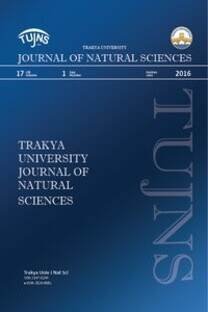Microgeographical non-metrical cranial diversity of the fat dormouse (Glis glis L.)
Glis glis, epigenetik, fenotip, coğrafi çeşitlilik, dağlar, populasyon yapısı, Bulgaristan
Yediuyurlarda (Glis glis L.) mikrocografi non-metrik kranial çeşitlilik
Glis glis, epigenetics, phenotypes, geographical variation, mountains, population structure, Bulgaria,
___
- 1. Markov G. N., Mammals in Bulgaria, 1-155, Sciences and Art, Sofia, 1959. 2. Tishkov Ch., The climate of the mountain regions in Bulgaria, 1-210, Bulgarian Academy of Sciences, Sofia, 1976. 3. Berry R. J., Epigenetic polymorphism in wild populations of Mus musculus. Gen. Res. Camb., v. 4, 193 – 220, 1963. 4. Berry R. J., Searle A..G., Epigenetic polymorphism in rodens. Proc. Zool.Soc., Lond., v. 140, 577-615, 1963. 5. Hedges S. R., Epigenetic polymorphism in populations of Apodemus sylvaticus and Apodemus flavicollis (Rodentia, Muridae). J. Zool., v. 159, 425-442, 1969. 6. Berry R. J., The biology of non-metrical variation in mice and men, In: The skeletal biology of earlier human populations (Brothwell D. R., ed.), 103-113, Pergamon Press, London. 1968. 7. Sjovold T., The occurrence of minor, non-metrical variation in the skeleton and their quantitative treatment for population comparison. Homo, v. 24, 204-233, 1973. 8. Smith M .F., Relationships between genetic variability and niche dimensions among coexisting species of Peromyscus, J. Mamm., v. 62 (2), 273-285, 1981.
- ISSN: 1302-647X
- Yayın Aralığı: Yıllık
- Başlangıç: 2018
- Yayıncı: -
Density and breeding of Muscardinus avellanarius L., 1758 in woodlands of Sicily
Maurizio SARA, Giulia CASAMENTO, Antonio SPINNATO
Microgeographical non-metrical cranial diversity of the fat dormouse (Glis glis L.)
The vocal repertoire of Graphiurus parvus, and comparisons with other species of dormice
Rainer HUTTERER, Gustav PETERS
Winter activity in the forest dormouse Dryomys nitedula
Morphological patterns and evolutionary pathways of the middle ear in dormice (Gliridae, Rodentia)
Ebru BURULDAĞ, Cengiz KURTONUR
Ecology of the garden dormouse (Eliomys quercinus) inn the alpine habitat
Sandro BERTOLİNO, Italo CURRADO
An attempt to estimate the size and density of Dryomys nitedula population in the Bialowieza Forest
Wojciech K. NOWAKOWSKI, Pawel BORATYNSKI
Weight changes of the comon dormouse (Muscardinus avellanarius L.) during the year in Lithuania
